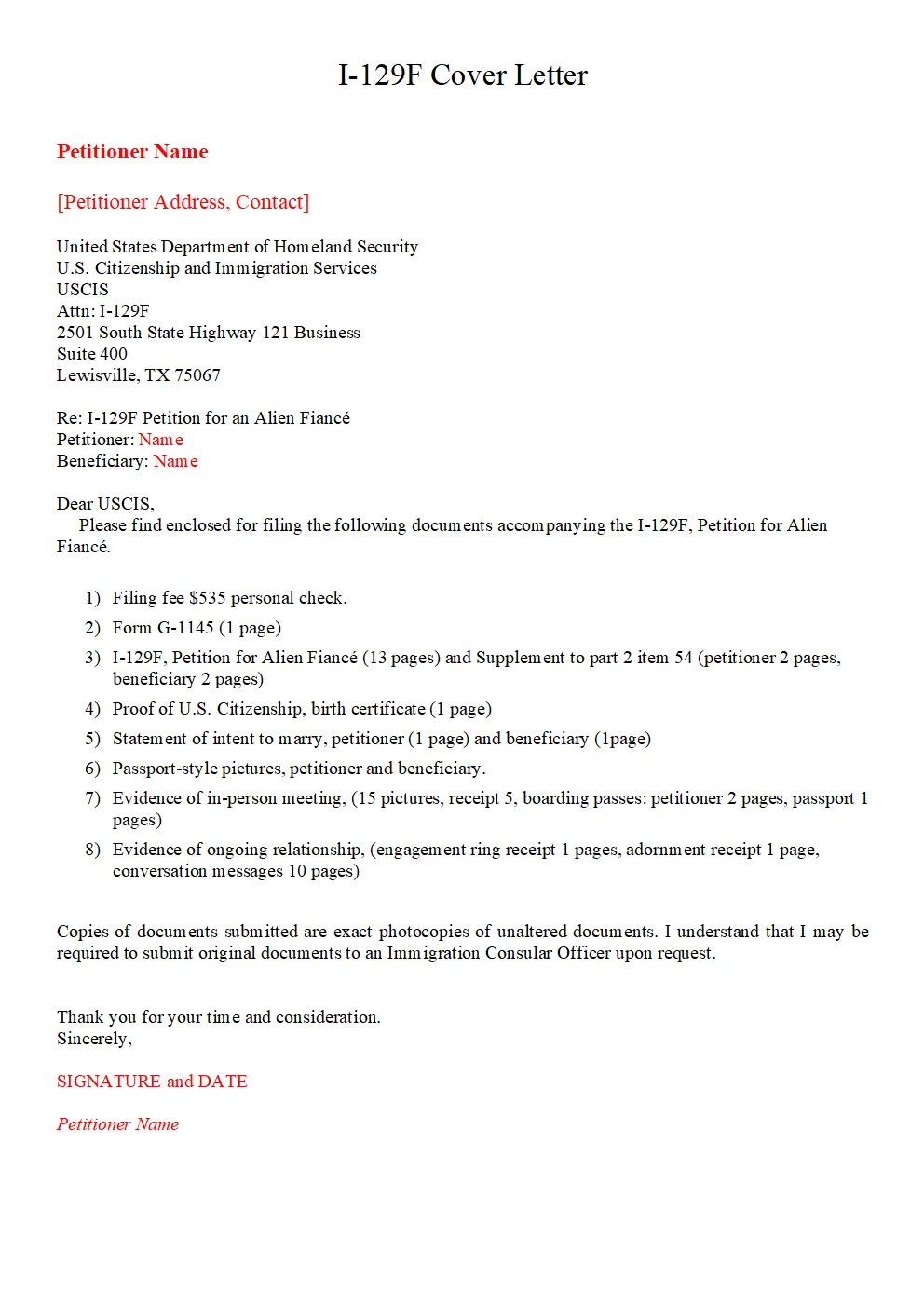What is a K1 Visa Cover Letter?
A K1 visa cover letter is a crucial document in the K1 visa application process. It serves as a formal introduction of your case to the United States Citizenship and Immigration Services (USCIS). This letter is your primary opportunity to present your relationship with your fiancé(e) and demonstrate the validity of your intentions to marry. The cover letter is not just a formality; it’s a strategic tool. A well-crafted letter can significantly influence the outcome of your application, guiding the USCIS officer through your supporting documents and providing a clear narrative of your relationship. It is a way to tell your story in a concise and organized manner, ensuring the officer understands the key aspects of your case. Without a compelling and organized cover letter, your application may be delayed or even denied, so it is paramount to create a well-thought-out document.
Importance of a K1 Visa Cover Letter
The cover letter is the first impression the USCIS officer has of your case. It sets the tone for the rest of your application. A well-written cover letter can highlight the most critical aspects of your relationship, making it easier for the officer to understand the context and importance of your supporting documents. A detailed and organized cover letter reduces the chances of confusion and the need for Requests for Evidence (RFEs), thereby speeding up the processing time and increasing the likelihood of approval. It provides a narrative to your story, explaining how you met, how your relationship evolved, and your intentions to marry. Essentially, the cover letter acts as a roadmap for the officer, guiding them through your application and ensuring they understand the authenticity of your relationship. It is not just a document; it’s your voice in the application process.
Key Components of a K1 Visa Cover Letter
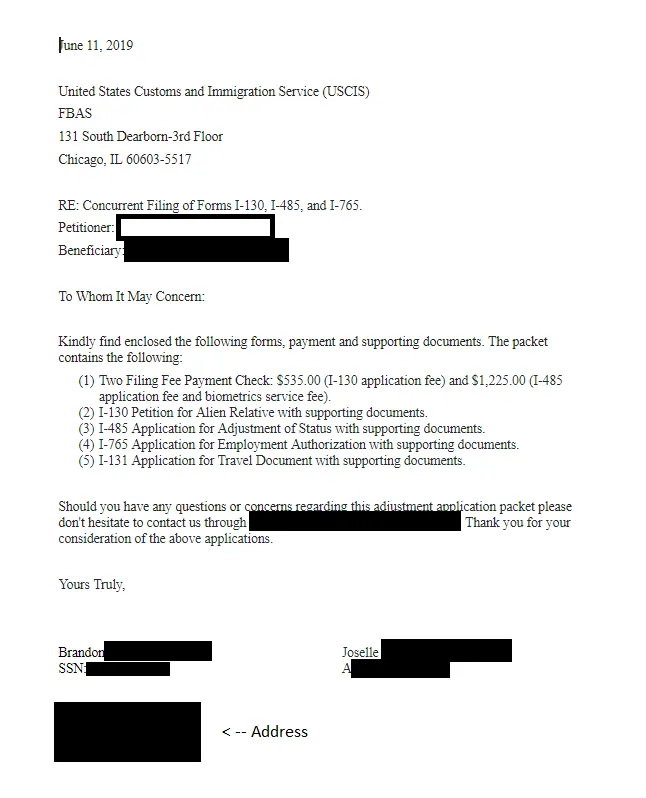
A strong K1 visa cover letter consists of several essential components. These elements work together to present a comprehensive and convincing argument for your application’s approval. Each section contributes to the overall narrative and helps the officer understand your unique situation and intentions. Be sure to include all necessary details for the case to pass the approval process. If a piece of information is missing, the application may be delayed or denied. This is not just a letter; it’s a vital part of the process and your future with your partner.
Your Personal Information
Start by providing your full name, address, date of birth, and any other relevant identifying information. Ensure this information matches the data on your application form. Providing accurate and up-to-date details is a fundamental step in the process. This section ensures that the USCIS can easily identify you and correlate your information with the rest of your application. Small errors can lead to delays or even denials, so double-check all details for accuracy. It sets the foundation for the entire letter, so attention to detail is critical.
Petitioner’s Information
Include the full name, address, date of birth, and other identifying details of your US citizen fiancé(e) (the petitioner). This information should be consistent with the details provided in the I-129F petition. Accurate and complete petitioner information is crucial as it validates the legal standing of the US citizen and their ability to sponsor the K1 visa. Including the right data ensures the USCIS can verify the legitimacy of the petition and proceed with processing the application. If any information is missing or incorrect, it can cause significant delays or lead to requests for further documentation.
Beneficiary’s Information

State your fiancé(e)’s full name, address, date of birth, and any other information necessary for identification. This section validates that the beneficiary is the person named in the I-129F petition and the applicant for the K1 visa. Correctly including this information ensures the USCIS knows who is applying for the visa. The officer must have all of the data to make an informed decision. It ensures everything aligns correctly and supports your application. Be thorough and provide complete details.
Relationship Details
This is the heart of your cover letter. Describe how you met, the evolution of your relationship, and your plans to marry within 90 days of entering the US. Provide specific dates, locations, and any other relevant details to illustrate the authenticity of your relationship. This narrative allows the USCIS to see the development of your relationship, from the initial meeting to the current plans. Make sure it is detailed and easy to understand. The more information that you can provide, the easier the decision for the officer will be.
How You Met
Detail how you and your fiancé(e) first met. Was it online, through mutual friends, or in person? Specify the place and the date. Be honest and thorough. This information sets the stage for the rest of your relationship story. Providing context helps the USCIS understand the nature and authenticity of your connection. The more details you provide, the clearer the picture of your relationship will be to the officer.
How Your Relationship Developed
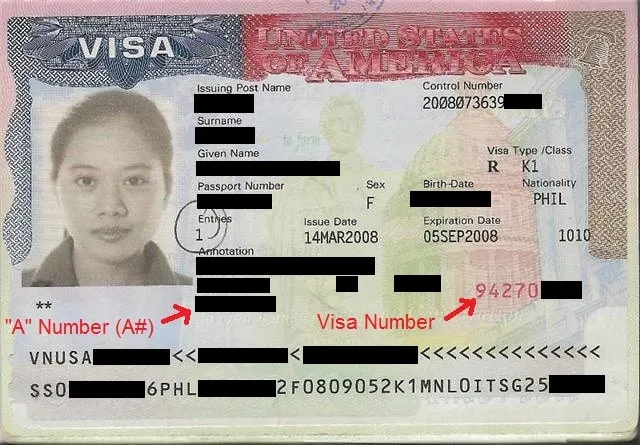
Describe how your relationship grew over time. Include details of communication, visits, and any significant events that strengthened your bond. Share the growth of your relationship, the development of your plans for the future. The officer must understand how you’ve grown into a couple. This section is key to establishing the legitimacy of your relationship, showing the USCIS that your bond is genuine and not just a formality for immigration purposes. Providing a timeline of significant events helps the officer understand the depth and commitment in your relationship.
Intent to Marry
Clearly state your intention to marry your fiancé(e) within 90 days of their entry into the United States. This is a key requirement of the K1 visa. Include a planned wedding date (even a tentative one) and location if possible. This declaration is a critical component of your application, and it reinforces your commitment to marrying within the required timeframe. It removes any doubt about your genuine intentions and meets the conditions of the K1 visa.
Supporting Evidence
Include a list of all supporting documents you are submitting with your application. This provides a clear guide to the officer, making it easier for them to review your evidence. Organize your supporting documents to help the officer understand the context of your evidence. You must show everything that proves your relationship to the officer.
Photos
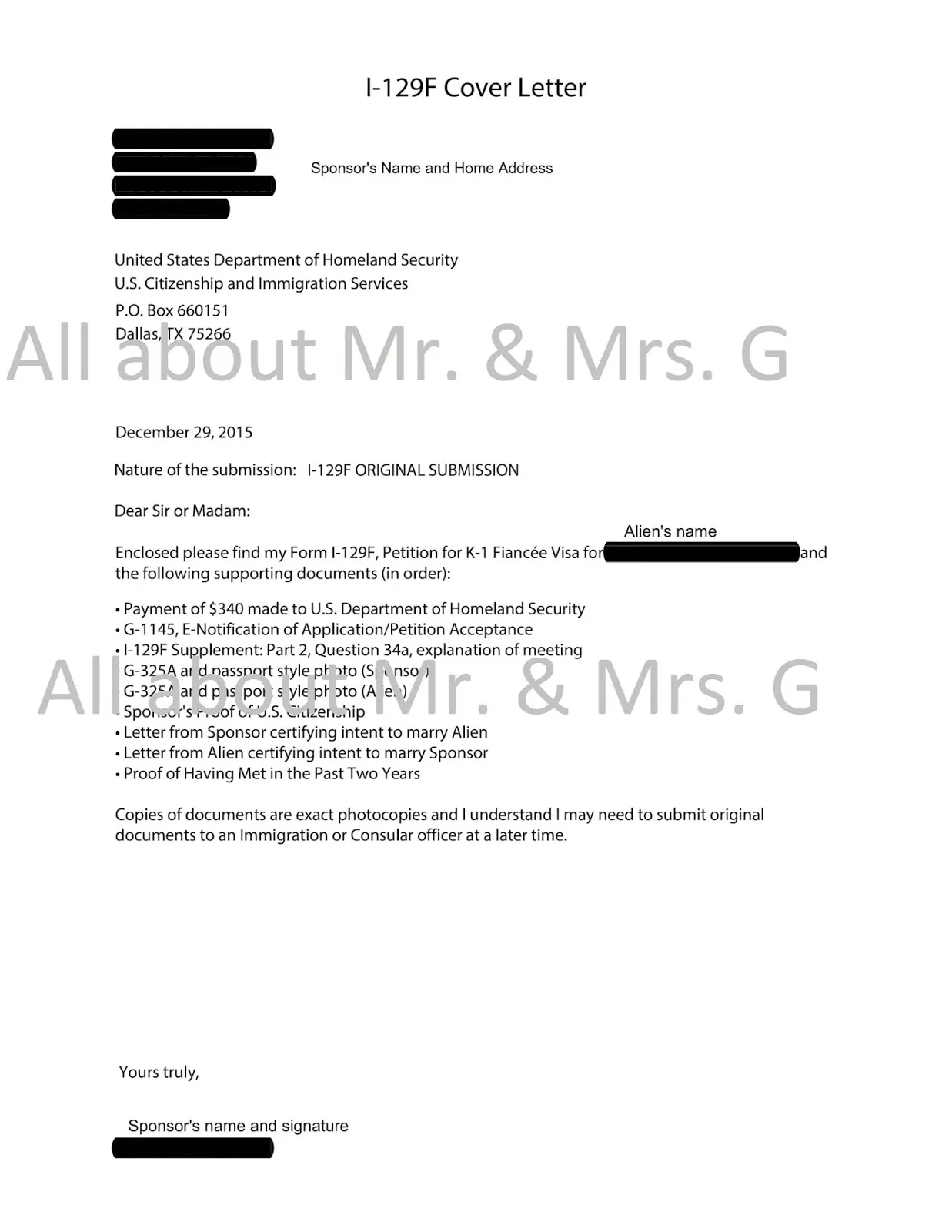
Include photos that document your relationship. These should show you and your fiancé(e) together in different settings, over time. Label each photo with a brief description of the date and location. Visual evidence significantly strengthens your case, providing a visual narrative of your relationship. Be sure to include photos from various stages of your relationship, including travel and holidays. This makes the connection undeniable.
Communication Records
Provide evidence of communication, such as emails, chat logs, and phone records. These records demonstrate your ongoing communication. You can prove that your relationship is active and ongoing. This is crucial for showing that your relationship is genuine. Include a variety of communication records to showcase the frequency and depth of your interactions. Be sure to provide records that are easy to understand.
Financial Documentation
If you have shared financial aspects (gifts, money transfers, etc.), include supporting documentation. This helps to show the depth of your commitment to each other. Financial ties can be a compelling form of evidence, providing proof of your joint life. Include bank statements, money transfer receipts, or any other relevant documentation to demonstrate your financial commitment.
Additional Documents
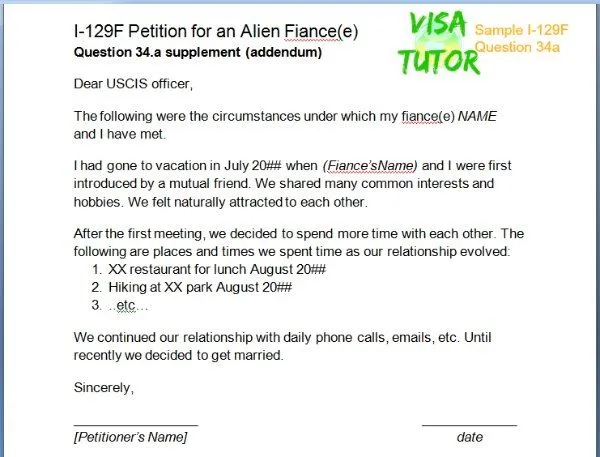
Include any other evidence that supports your relationship, such as flight tickets, hotel reservations, or cards. These items further support your application. Any document that strengthens your case is useful. Including diverse evidence provides a more robust and persuasive argument for your K1 visa application.
Tips for Writing a Strong K1 Visa Cover Letter
Writing a strong cover letter requires careful attention to detail and clarity. Following these tips will help you create a compelling and effective letter that supports your K1 visa application. By following these tips, you can increase your chances of a favorable outcome. A well-crafted letter can greatly improve your application.
Be Honest and Accurate
Always be truthful in your cover letter. Any misrepresentation, no matter how small, can have serious consequences, including denial of your visa application. Ensure all information is factual. Accuracy is paramount when writing this letter. Always verify all details to avoid errors. Dishonesty can severely harm your case.
Keep it Concise
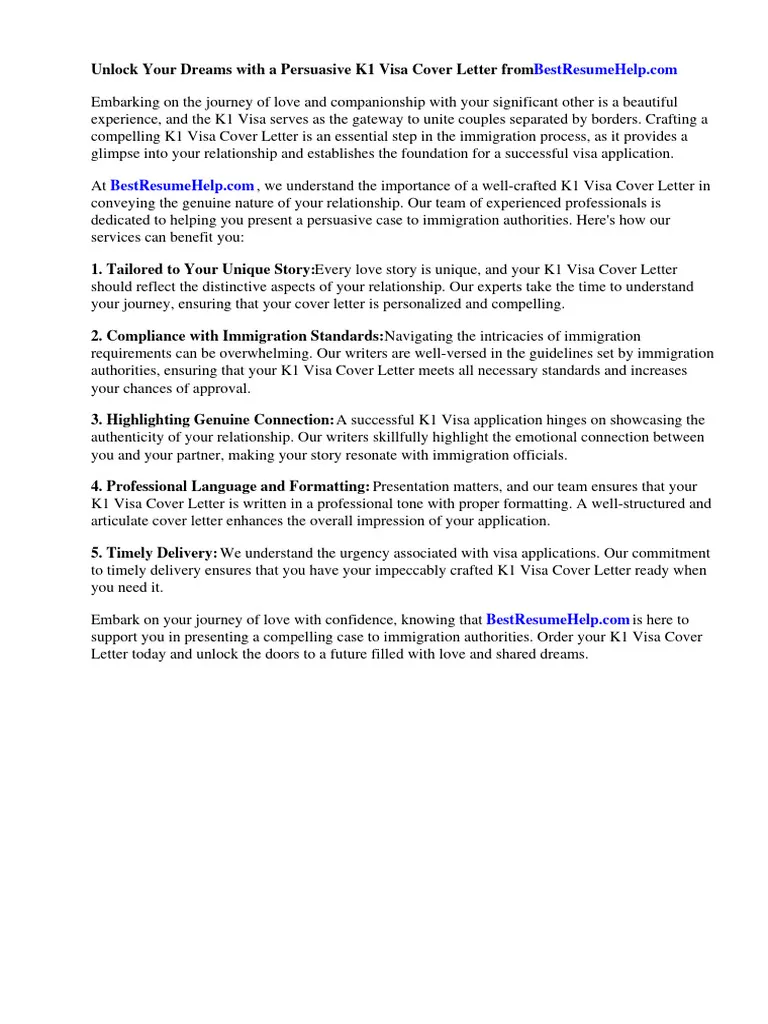
Be clear and direct, avoiding unnecessary details. The officer needs the important details. Keep your sentences and paragraphs brief. It makes it easy for the officer to read and understand. Focus on the most crucial aspects of your relationship and intentions. A concise letter is more likely to be read thoroughly.
Proofread Carefully
Before submitting your letter, thoroughly proofread it for any grammatical errors, spelling mistakes, or typos. Errors can detract from the professionalism of your application. Use a grammar checker and have someone else review your letter. Ensure your letter is error-free. A polished letter shows attention to detail and professionalism. Proofreading is vital for making a good impression.
Format Your Letter Properly
Use a professional format with a clear heading, date, and appropriate salutation. Use a readable font (e.g., Times New Roman, Arial) and a standard font size (e.g., 12 points). The cover letter must be clean and easy to read. A good format improves readability. Proper formatting can make your letter more professional.
Common Mistakes to Avoid
Avoiding these common mistakes is crucial to ensure your K1 visa cover letter is effective and increases the chances of approval. Addressing these pitfalls proactively will strengthen your application. These common errors can undermine your application. Be aware of common issues.
Incomplete Information
Failure to provide all required information can lead to delays. Make sure that all necessary details are included. Ensure you have provided everything required. Providing all necessary information is critical for a successful application. Complete information demonstrates thoroughness.
Lack of Supporting Evidence
A cover letter without supporting documents is weak. Always include all the documents. Make sure to include everything, and you will increase your chances. The evidence is critical. Always make sure to support what is claimed in the application.
Inconsistencies
Ensure the information in your cover letter matches the rest of your application. Any discrepancies can raise suspicion. Maintain consistency throughout. Inconsistencies cause delays or denials. Review your application carefully to ensure all details are the same. Always ensure that all the information in all of the documents matches.
The Final Steps
Completing these final steps is critical before submitting your K1 visa application. Following these steps ensures that you have prepared a comprehensive and well-organized application. Pay attention to all the details to avoid mistakes. Always make sure that you have completed everything.
Submitting Your K1 Visa Cover Letter
Make sure to submit your cover letter with your complete application package. Follow the instructions provided by the USCIS for submitting documents. Keep a copy of your cover letter and all supporting documents for your records. Ensure proper submission of your application. Remember that the K1 visa application process requires careful planning, attention to detail, and a strong commitment to accurately presenting your relationship. The cover letter is one of the most important pieces of this process. Make sure you are prepared, so that your application goes smoothly.
